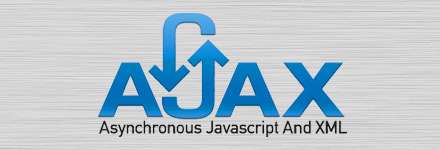Advantages of Ajax-Driven Websites

Advantages of Websites using Ajax-Driven Functionalities
Do you want to add apps to your Website in order to enhance the user experience by making your site more interactive and easier to use?

Ajax is a group of technologies that are combined together in order to create interactive Web applications. This is made possible because JavaScript accesses the information through the DOM and displays it in a way that allows the user to interact with it. In short, Ajax is a practice that involves using pre-existing, proven and reliable technology in a new and different way that enhances the user experience.
Although Ajax is not necessarily the right method for developing every Web application, there are certain benefits to using this Web development technology. Namely, these benefits include:
-
Make the Web site more attractive and convenient to use
-
Reduce the amount of data that is transferred
-
Decrease the cost of Web hosting
The fact that Ajax allows applications to make asynchronous calls to the server is quite possibly the greatest benefit to using this technology when creating applications. Thanks to the asynchronous nature of Ajax, people who visit your site do not need to wait for all of the data to arrive before they can take another action because the user doesn’t have to take any action in order to start the transfer of data. In other words, the content, data and design are brought together as a whole and automatically start becoming prepared for the user to use, which results in very little lag time. For this reason, Ajax is sometimes referred to as Asynchronous JavaScript and XML.
In addition to reducing lag time, which enhances the user experience, Ajax acts as an intermediary that reduces the amount of data that has to be transferred. This means the data actually works within the Web browser in order to render the application. As a result, the Ajax engine maintains most of the information within it, making it possible for the engine to handle the request. This can greatly improve network performance within sites and locations where restrictions are placed on data transfer.
Since a limited amount of data has to be sent to the server, Ajax also reduces the amount of work the server is required to do. For example, the server doesn’t need to process all form elements, to process the viewstate, to send images back to the client or to send a full page back to the client. As a result, the costs associated Website hosting are reduced.
Thanks to the many benefits that Ajax has to offer, this technology is most useful with the following applications:
-
Validating forms – rather than waiting until the use completes and submits the form, using Ajax makes it possible to notify users about errors as they are typing
-
Comments – Ajax allows blog and article comments to appear immediately on the page if desired
-
Data filtering – Ajax can help you make a Web table with filters and sorters so it behaves more like Excel
-
Polls and surveys – site visitors can instantly see the results of a poll or survey after clicking their vote
These are just a few examples of how Ajax can be used. If you have certain applications that you would like to see on your Website, let us know and we will help you determine if creating them with Ajax is the best way to go.